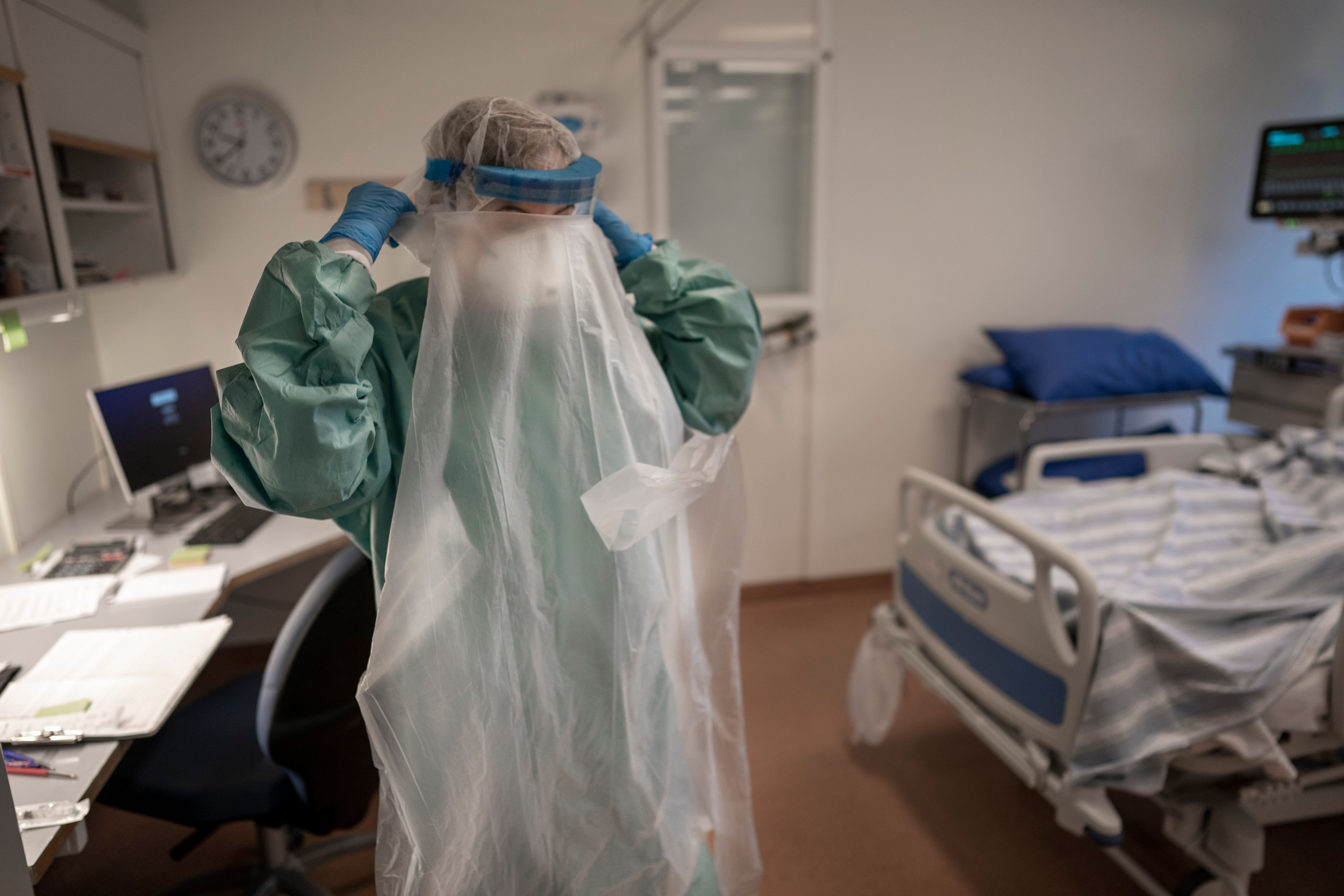Faith in Society: Sweden’s Response to New Outbreaks of COVID-19

The Pandemic in Sweden
The number of SARS-CoV-2 infections in Sweden has been increasing gradually since mid-September, and a daily record of new cases was recorded on 11 November (over 5,700 in a population of 10 million). The number of infections per 100,000 inhabitants remains high, but it is still lower than in EU countries that have experienced a drastic increase in cases since October. According to the Swedish epidemiological authorities, the new record is not due to the faster spread of the virus, but to contact tracing and a higher number of tests being administered (currently around 160,000 a week, compared to 20,000 in spring). This is confirmed by the substantially lower number of deaths in Sweden, which currently has one of the lowest COVID-related mortality rates in the EU per 100,000 inhabitants. This contrasts with the first months of the pandemic, when Sweden stood out due to numerous fatal cases. Among the reasons cited by the authorities for the bad spring statistics is the ineffectiveness in protecting elderly nursing home residents from the virus, which has been a challenge again since mid-November. They also point to the high number of cases just after the outbreak of the pandemic and the huge burden on healthcare because of this, as well as large immigrant communities, more vulnerable to the disease due to their lower socio-economic status.
According to Anders Tegnell, chief epidemiologist of the independent Public Health Agency (AZP) of Sweden, available data do not support the conclusion that Sweden has experienced a second wave of the pandemic, but there are more and more local outbreaks. In combating them, the authorities generally stick to the current model, based on recommendations. Corrections relate to the further decentralisation of decision-making. In mid-October, the powers of regional authorities and local AZP offices were increased, allowing them to decide independently to impose additional measures. Further recommendations have been introduced in 17 out of Sweden’s 21 regions, mainly concerning avoiding contact with people outside the household. However, most of the commonly used recommendations have remained the same since spring. The few changes introduced since November end the obligation of preventive self-isolation of people over 70.
The government is responsible only for the country’s entry restrictions, the activities of some service providers, and public events, which it wants to limit to 8 participants by the end of November. It also initiated the preparation of a special law increasing its powers during an epidemic. The aim is to provide the executive with the ability to make swift, legally-binding decisions in the event of a sudden worsening of the situation. The legislative work is to last until mid-2021. For this reason, it is uncertain whether these laws will apply to the COVID-19 pandemic. In April, the government was granted the power, limited to two months, to issue extraordinary legal acts without the prior consent of parliament, but did not exercise this prerogative.
The Myth of the Swedish Model
There have been many misunderstandings about the Swedish strategy in managing the COVID-19 pandemic. It is presented in European public debate as an experiment based on the use of only minimal precautionary measures. Thus, the late introduction or lack of restrictions in other countries hit hard by the second wave of the pandemic is often identified with the Swedish approach.
Meanwhile, this model stands out in the world primarily because of the recommendatory nature of restrictions, which usually lacks sanctions for non-compliance. However, this does not mean the lack of restrictions or voluntary compliance with them, but a social contract based on confidence in the fulfilment of duties by the authorities and citizens. In September, 63% of Swedes declared their trust in Tegnell. In turn, national restrictions are replaced in Sweden by the possibility of decision-making at the local level and by individual entities such as schools and nurseries. For these reasons, the Swedish authorities reject allegations that there is an intention to create herd immunity, which would entail taking no action to protect health.
Economic Recovery Plans
According to the government’s forecasts, Sweden’s GDP will drop by approximately 4.9% in 2020, and will increase by 4% in 2021. These forecasts are much better than the June ones, which predicted a recession of over 6%. At the same time, they do not differ much from the forecasts for other Nordic countries, despite the fact that they have introduced more severe restrictions for the economy. The European Commission is even more optimistic: it forecasts a decline in Swedish GDP of only 3.4% in 2020, and an increase of 3.3% in 2021. The conditions for recovery in Sweden are also favourable, due to the low level of public debt.
The goal of the Swedish government is not so much to rebuild the pre-pandemic economy, but rather to take advantage of the crisis to find solutions to structural problems. According to plans announced in September by Prime Minister Stefan Lövfen, in the coming year the government will focus on creating new jobs by investing in low-carbon economy and on improving health services and care for the elderly. This is reflected in the draft budget for 2021, which includes a stimulus package worth SEK 105 billion (€10.2 billion).
The government is planning investments contributing to the achievement of climate goals, including climate neutrality by 2045. It will allocate around €1 billion from the stabilising package for, among other goals, the further green transition of Swedish industry and the public sector, investments in circular economy, increasing biodiversity, preventing the emission of greenhouse gases (for example, through restoring wetlands), and supporting the transition to fossil-free transport (including rail freight transport). These activities are already being implemented from the funds allocated to managing the economic consequences of the pandemic this year. For example, the government made state aid for SAS airlines is conditional on the company meeting strict environmental requirements (reducing CO2 emissions by 25% by 2025, five years earlier than previously assumed). It also invests in more frequent rail connections, between, for example, Malmö and Brussels, in order to increase access to environmentally friendly means of transport.
The government wants to strengthen social welfare and education, which are largely the responsibility of municipalities and regions. About 30% of the funds from the package will be allocated to these goals. The economic crisis has hit hardest among young workers and immigrants, groups for whom the employment rate is expected to fall to its lowest level since 2000. Therefore, a significant part of the crisis package constitutes tax and social security contribution breaks for employers stimulating employment.
Conclusions
The measures taken by the Swedish authorities, despite their various interpretations in European public debate, result from a conscious choice of the method of containing the pandemic. They are consistent, transparent, and based on scientific research. Due to the specificity of the Swedish strategy, which is based on a well-established civil society, looking for similarities with other, less restrictive models of containing the pandemic is unjustified. The effectiveness of Sweden’s approach compared to other EU countries can only be assessed after the pandemic is over. Also, only then it will be possible to verify whether the international image of the Swedish state has suffered or strengthened.
Nordic cooperation, a pillar of Swedish foreign policy, has not been affected by the proportionally lower number of infections and the different path chosen to manage the pandemic in the rest of Northern Europe. Evidence of that is the programme of the upcoming Finnish presidency of the Nordic Council in 2021, which assumes an even greater degree of regional integration of the participating states.
Good financial conditions allow Sweden to focus on far-reaching reforms. However, combining economic recovery plans with the willingness to counteract climate crisis is remarkable. This is to be accomplished by allocating public subsidies, necessary in times of recession, to investments consistent with climate goals.


